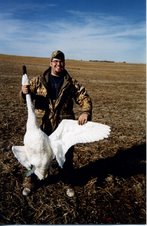
It’s canny how some of my most memorable outdoor experiences have been last minute operations.
Once again, a last minute trip was planned for Devil’s Lake while I was at work. When I got done at 9 o’clock pm I packed up my fishing gear and forgot about everything else going on in my life. My partners in crime for this adventure were Dave Easton and his high school Ian, from Colorado.
Light rain sprinkled our windshield as we roared down Highway 2 in Dave’s Jeep. The drive went as smoothly as it could have and we landed at Gramm’s Island campground a little before 11.
We found the camp office closed, so we stretched our luck and went looking for an open campsite. There was a nice open spot by the lake and we decided we would settle up with the park officials in the morning.
Ian and Dave pitched the small two-man tent they had brought as I organized the boat for the morning. After we finished, we talked about the outline for the morning. A ten-minute conversation ensued before the three of us could compromise on our game plan. Everyone has to voice an opinion or experience before a decision is ever made. We finally agreed that we would wake up at seven and start by fishing the trees in about ten feet of water. We had heard reports that fisherman were having success under these conditions. Since we were all on the same page, we decided to do what we do best – enjoy a few beverages over good conversation.
I woke up uncomfortable at seven to my cell phone alarm; I had slept in Dave’s Jeep because of lack of tent room. I turned off my cell phone and tried to go back to sleep. About eight o’clock I woke the guys up and we proceeded to make our way to the bait shop. We picked up some leeches, settled our tab with the park officials and put down a cup of coffee. After that it was time to launch Dave’s sixteen-foot Lund into the ever growing plain of water.
We started to fish the trees with slip bobbers and were having no success at all. None of the other boats around us were catching fish either. I started to pitch a countdown and immediately caught a decent sized pike. The wind picked up from the West and rain began to fall softly from the cloudy sky. That was when we decided to switch to trolling.
I put on a minnow-colored Shad Rap as we began our troll along the outside of the trees in twelve to fifteen feet of water. Within fifty yards I easily landed a nice eater sized walleye and placed him in the live well. After that we picked up two more fifteen inchers in the next one hundred yards of the troll.
Next Ian caught about the smallest eye’ I have ever seen. The fish was seriously only six inches long. Laughs were had all around and the fish was quickly released into the water.
The troll continued and we fought our way through; a school of white bass, one small pike and two twenty inch eyes’.
We were feeling pretty good about our success when Ian hooked into a big fish. Right off the bat the fish did not fight much but sat heavy on Ian’s seven-foot Ugly Stick. The fish stayed deep as Ian coaxed it towards the boat and I was hoping it was a big walleye. Once the fish got close to the boat it began to go off on drag ripping runs. My heart sank a little; I knew it was fighting like a pike. Ian boated the Northern after the awesome fight. The fish measured 31 inches, about seven to eight pounds. After a couple snap shots Ian released the fish back into the dark water. Not a bad fish, especially since it was only the second Northern Pike Ian had ever landed.
After that we hit the trees again with bobbers, trying to finish out our daily limits of eyes. I was just thinking to myself how I hadn’t missed a fish yet when my bobber slipped below the surface. Of course I set the hook too soon and missed the fish. I love the finesse it takes to catch a walleye on a slip bobber. Isn’t it funny how once you think you have everything figured out you discover you don’t?
Not too long after that the three of us were consistently catching fish till we had our limits. With hunger setting in we headed back to Gramm’s Island against the mighty waves of Devil’s Lake. Our fish totals for the morning were nineteen walleyes, three pike and two white bass.
We headed back towards Grand Forks with thunderheads on the horizon. There wasn’t much conversation on the ride home, all three of us were reflecting to ourselves. It then occurred to me we had partaken in a great little trip.
It is always good to get out and experience the outdoors, even if it is only for a night and the morning. Gramm’s Island is setup for sportsman and I would encourage anyone to go there and experience Devil’s Lake. Most of the local bait shops can provide you with either maps or directions to various parts of the lake. Just remember, it’s like the old guy at the boat landing said to us, “This ain’t no farm pond, son.”

